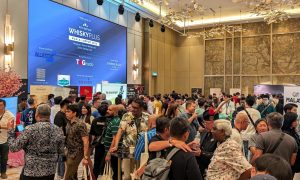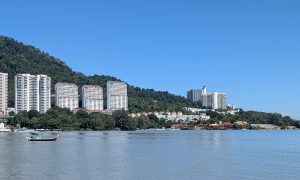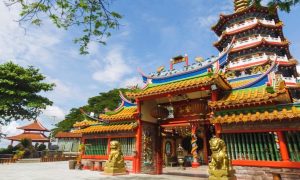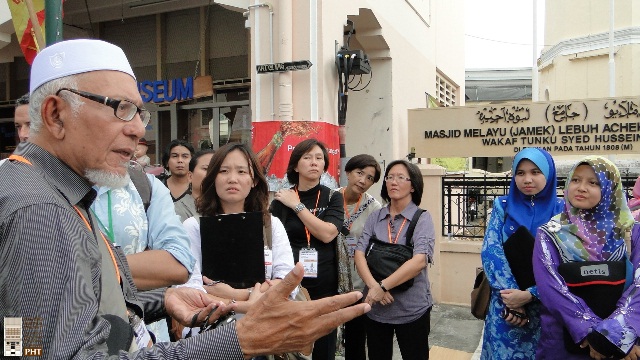
It’s an annual journey for millions around the world, and historically, Penang has played a pivotal role. Let Kat Fatland be your guide into the importance the Pearl of the Orient has played in the Hajj, the journey to Mecca.
In August 2013, Penang Heritage Trust held a two-day conference centred around Penang’s role in one of the most important spiritual events in the world: Hajj, the Islamic pilgrimage to Mecca. From the 18th century until the 1970s, Penang was the port of departure to Mecca for all Muslim pilgrims in the region, from Southern Thailand to Aceh, on the other side of the Malacca Straits. Nowadays, air transport has become the chosen form of travel over the Indian Ocean to the holy city, but as the “Penang and the Hajj” conference suggests, the remnants of Penang’s role in this great event can still be seen today.
For over 2,000 years, the ancient city of Mecca in Saudi Arabia has been the gathering spot for the spiritually minded. During the earliest years of the common era, tribes and peoples of many spiritual faiths living in the Arabian peninsula would make a pilgrimage to the city to perform sacred rituals dating back to the time of Abraham. In the year 630, with the advent of Islam and its prophet Muhammad, the pilgrimage became exclusively Muslim. Since then, Muslims from every corner of the globe have continued to come together to take part in what is today considered the world’s largest communal gathering. Three million pilgrims gathered in Mecca last year, over half of which came from outside Saudi Arabia. The Hajj will take place mid-October this year, in accordance to the Islamic lunar calendar.
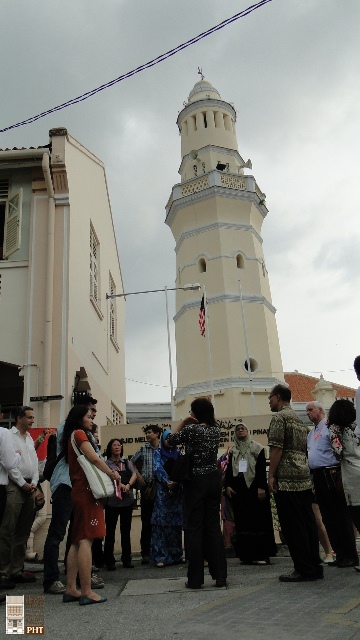
Although the Hajj is one of the fi ve pillars of Islam, all of which indicate required practices of the faith, only in the last century has the journey to Mecca become so widely attainable. For Muslims living in the Malay archipelago in the early 18th century, the pilgrimage required months of travel, including a dangerous and lengthy sea journey across the Indian Ocean that could very likely end in shipwreck and death. Such a lengthy sojourn necessarily required a fair sum of money, which caused the number of pilgrims to remain comparatively low. During to their extended stay in Mecca, as they waited for a ship that would bring them back to their countries of origin, some pilgrims took advantage of their time by selling goods brought from their homeland and purchasing unique items from the Arabian peninsula to trade later. According to conference speaker Dato’ Sharom Ahmat, espresso from the Yemeni port city of Mocha was an especially popular item to bring home.
During the late nineteenth century, the journey to Mecca changed drastically. By this time, modern steamships could be found in and around the Malay Archipelago, and the opening of the Suez Canal in 1869 allowed more ships and traders to access the region than ever before. Khoo Salma Nasution, a speaker at the Hajj conference, noted that these two major steps towards modernity made it more economical for large European steamers to transfer pilgrims from Southeast Asia to Jeddah, the port city connecting to Mecca. On these ships, the journey took just two to three weeks, and carried more danger of seasickness than shipwreck. Soon, selected steamers began carrying up to 1,000 pilgrims each from one side of the Indian Ocean to the other. Sitting on the edge of the Malacca Straits, Penang was the port of choice for these steamers, and soon enough, the island had built a reputation for itself as the ‘second Jeddah’.
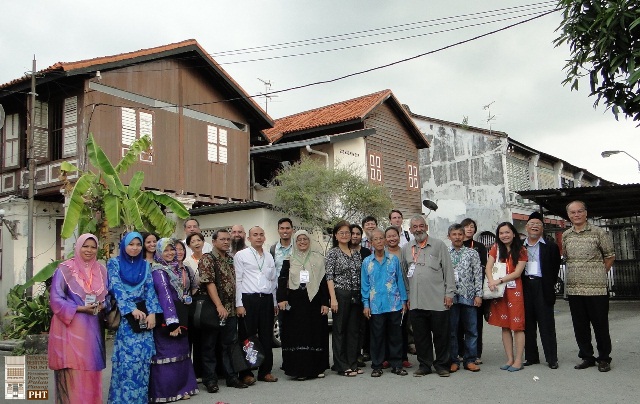
Once the journey to Mecca became safer and more accessible, pilgrims from all over the region, including Perlis, Terengannu, South Thailand (Patani in particular), North Sumatra and Aceh, travelled to Penang to begin their journey to fulfill the fifth pillar of Islam. Three days before the ships were set to sail, the pilgrims would gather in George Town to collect supplies for their journey. According to Abdur-Razzaq Lubis, another speaker, businesses catering to the sojourners began to flourish, particularly in the Acheen Street area. On this street, pilgrims would buy their tickets to board the steamers from any number of Hajj ticketing agencies. Many of these agencies were of Arab descent, although Tamil Muslims also had a small share in the business. The street also became known for a very specialized sort of business: that of the Sheikh Haji. These Sheikhs acted as ‘pilgrim guides’, and could be hired by pilgrims to accommodate all their needs, including luggage transport, accommodation and travelling papers. The Sheikhs would also accompany their ‘clients’ to Mecca and back, and would educate the pilgrims on the rituals and rites of the Hajj ceremony. Dr. Numan Hayimasae suggested during the conference that although the Sheikh Hajis were considered to function as spiritual mentors, it was certainly possible for them to cheat their clients when the opportunity arose.
In this way, as speaker Dato’ Dr Mujahid Rawa put it, Acheen Street hosted the growth of civil society in Penang, and was the centre of learning. George Town’s Muslim publishing industry began on this street. But many others benefi tted from the Hajj pilgrimage as well. Several businesses still in operation today fi rst opened their doors to accommodate the annual influx of pilgrims, including the Medina Store and Fazhal Mohamad brothers, each on Chulia Street. Some shops in Singapore expanded to Penang to sell textiles and ihram clothing – cloths worn during the Hajj ceremony in Mecca. Other shops sold Batik which pilgrims purchased during their stay: thanks to Penang’s free-port status, the fabric could be bought cheaply. Prayer accessories were also sold, as were prayer mats and prayer veils.
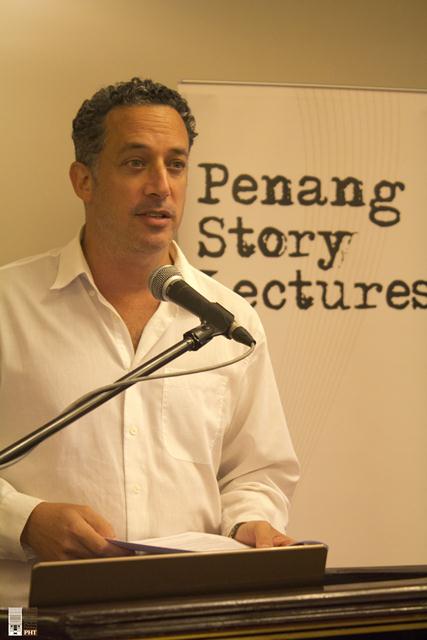
Of course, any story of Penang’s history would not be complete without mentioning its culinary delights. According to speaker Mohammed Siraaj Bin Saidumasudu, George Town was a city of feasting during the pilgrims’ stay. Nasi Kandar and Mee Mamak were favourite dishes, as was the Teh Tarik, created by the Tamil Muslims of the era. Like Medina Store and Fazhal Mohamad, some of Penang’s mainstay Nasi Kandar restaurants have their origins in this annual four-day period, including the legendary Hameediyah. One Tamil Muslim man made a business in annually selling the curry paste known as ‘rempah giling’ used in Nasi Kandar. According to Mohammed Siraaj Bin Saidumasudu, he’d grind all the spices for this paste using a granite stone. Another man became well known for the popiah he’d sell to pilgrims.
The festive atmosphere during these days did much to strengthen the relationships between Muslims of different ethnicities. Aside from business, some Penang Muslims would offer their homes to pilgrims during the short days before their travels. The grounds of the Acheen Street Mosque and the Kapitan Kling Mosque would be filled with tents set up to accommodate the pilgrims, some of whom would arrive earlier and stay for longer after the completion of their Hajj. More than just a journey across the sea, the Hajj represented a cultural coming-together. It allowed pilgrims to expand their worldview simply by being in the presence of those unlike themselves, and fostered a sense of unity among the community that can still be seen and felt during this important annual event.
Source: Penang International October/November 2013
What are your thoughts on this article? Let us know by commenting below.No registration needed.
Read more:





